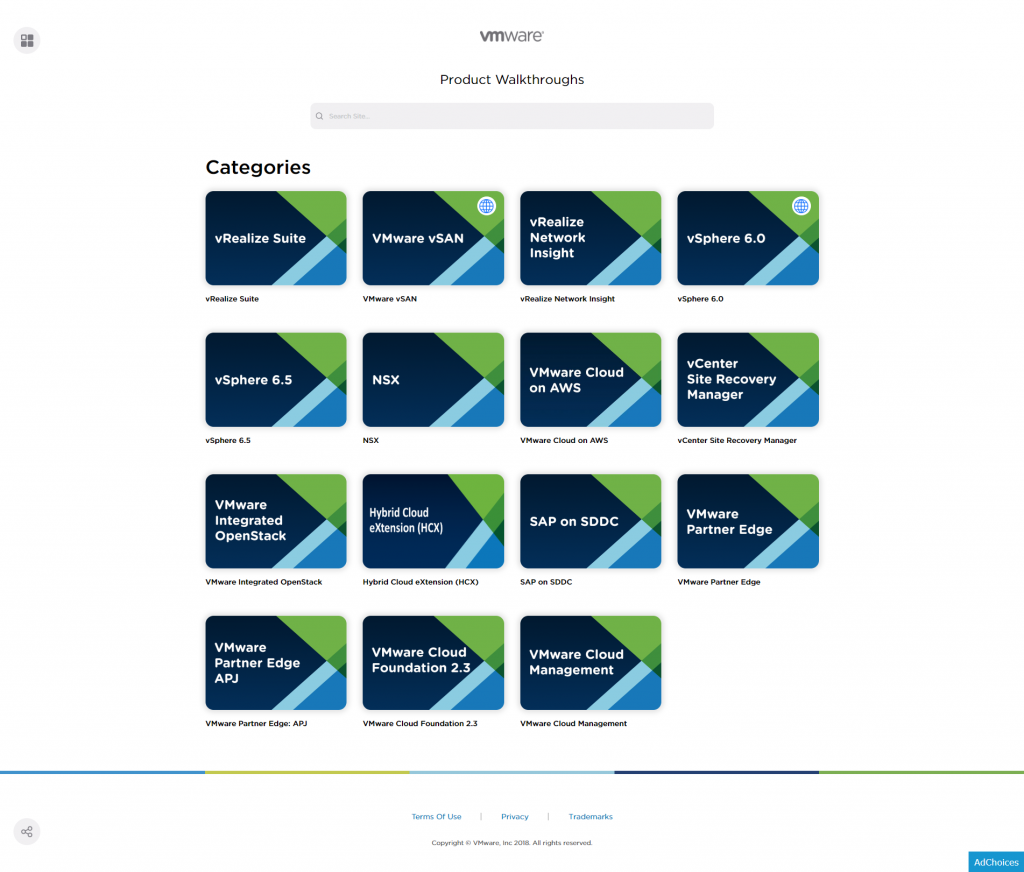The VMware product line can be a little overwhelming. With VMware announcing new features, products and services regularly, it can be hard to keep up. That said, VMware offers a tool to help you digest and retain all of that information, and they’ve been keeping it up to date. It’s been around for a while now, since about 2014 I think, but if you haven’t seen it…
Allow me to introduce the VMware Product Walkthrough website. The site is mobile friendly, and pretty intuitive.
This tool provides technical overviews and step-by-step guides for installing, configuring and managing VMware products and services. Every single walkthrough includes screenshots and detailed explainations.
You can also use the site as a self-paced demo of VMware products and features. Get familiar with the basic features of VMware products before you dive into the VMware Hands-on Labs for those products.…
